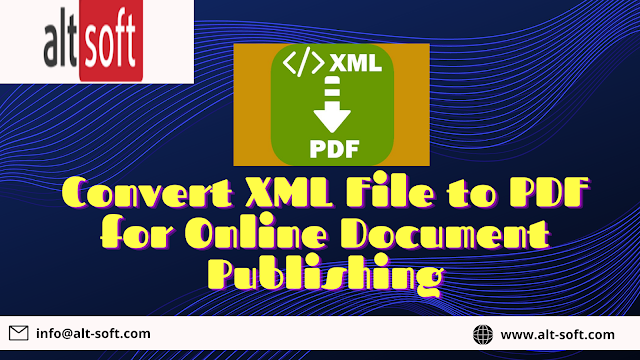We live in a data-driven world where every individual is looking for various advanced and innovative ways by which they can share, gather, store and organize relevant data that can be convenient and useful for them.
XML, Extensible Markup Language, is one of the most preferred formats for storing and sharing information on the Internet, intranets, and other places with standard ASCII text. The language is defined by a set of rules that encodes the document in a readable format for humans as well as web-based search engines.
However,
there is another format called PDF for Portable Document Format that is used to
display documents in an electronic form. PDF is highly preferred over XML
because of its convenience and specification that are ideal for online document
publications. It does not need any software, hardware, or operating system for
being viewed by the user.
Portable document format (PDF)
Let us have a
better understanding of what PDF is!
The file format was originally developed by Adobe Systems, stating it to be a universally compatible file format for the convenience of the users and with the use of PostScript format. In today's world, it has become an International de-facto standard use for exchanging information over the Internet.
Below we have
made a list of some of the biggest advantages of converting
XML to PDF for business operations or online publications -
The format is omnipresent
PDF can be
considered as a format that is adopted and accepted all over the world. No
wonder why! Because of the fact that the format is easy to view and share
across the Internet, PDF is a safe and suitable choice to send documents.
Document format is maintained
Most of the
word processes alter the format while sharing the information from one system
to another. This can often cause a lot of confusion and problems, especially
when you have some crucial publications with images and graphics. However, this
is not the problem with the PDF format, as the document will be presented in
the exact format of how you curated it. So, you do not have to worry about the
layering of your content while uploading it on the Internet or printing it out.
Small size
The file format
tends to have a smaller file size compared to other formats. It compresses the
high-quality files to relatively small files. Hence, users prefer it for saving
the hard drive space in cases when they are working with limited storage
resources.
Versatile format
The best
thing about PDF files is that it works on all major operating systems currently
available in the market. Whether we are talking about a PC, Mac, iOS, or
Android, users do not have to worry about viewing the document.
Integration of non-text elements
Publishing content on the Internet generally demands to have a visually pleasing layout that can help the audience to connect. PDF is the most convenient format that allows this, along with making use of links that open up in the viewer's web browser.
There are
many online tools that are specifically designed for converting XML to PDF
format. These tools can be of immense help for the online publishing industry
for sharing data over the Internet for better accessibility of the audience.
The bottom line -
XML is a
widely used file format for storing documents. However, PDF is a better option
for the publishing industry to share data over the Internet. Now that you have
read all the benefits above, you will get a better understanding of why we
recommend you for converting XML to PDF.

0 Comments